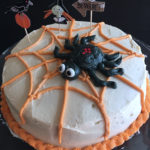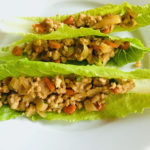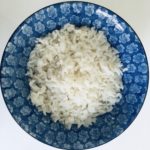– written by Lily’s mother
It wasn’t a great start to the holiday season, but little did we know that things were about to get much, much worse.
One evening several days before Thanksgiving, my husband and I were relaxing with our toddler and some friends. Our 18-month old daughter, Lily, had a cold but she was enjoying helping herself to crackers and cheese. I was six months pregnant. Lily asked for a bottle, drank it down, and vomited the contents of her stomach all over herself, me, and our friends’ couch.
My husband and I didn’t know what was wrong. Perhaps she had been eating too much, and she did drink her bottle quickly. Several weeks earlier she had vomited once after going to bed, and we thought she’d drunk her bottle too quickly then too. She was almost due for her 18-month checkup, so we decided to wait to see the pediatrician.
In the intervening weeks, Lily vomited a few more times, usually after eating and then drinking a bottle. We tried limiting her food intake and cutting the size of her bottles to 2-3 ounces, and that seemed to help. We switched to soy milk. Still, during the weekend before her 18-month well baby appointment she vomited twice, and I was relieved to be taking her to the doctor.
The pediatrician wasn’t overly concerned about Lily because she was putting on weight normally, in fact she was in the 95th percentile for both height and weight, as had been the case since she was a month or so old. This was to be expected with her 6 -foot plus parents. The pediatrician noted that Lily had a bad cold and theorized that she was coughing so hard she was making herself sick. This seemed plausible, in particular because she most often vomited after going to bed, and coughing while lying down seemed like it could affect the stomach.
A week or so later Lily’s daycare provider asked me to pick up Lily early since she wasn’t well. She seemed lethargic and had a terrible cold, though no fever. I took her to the pediatrician again and this time the diagnosis was bronchitis. I was given Albuterol to help her breath, antibiotics, and an inhaler. By now I was seven months pregnant and I had caught her cold/bronchitis as well, so neither of us felt well.
Once we got her on the medication, Lily breathed much easier. I took her back to the pediatrician for a follow-up appointment, and she was cleared to fly to Seatlle for the holidays.
Trouble started in the airport when Lily vomited during the interminable wait for our flight. She was pale and lethargic, and I debated staying home but was really looking forward to seeing my family. In the end we flew to Seattle, but she vomited again on the plane. I carried her off the plane wrapped in an airplane blanket as all of her spare clothes were soiled.
Lily scarcely ate over the holidays. All she wanted was crackers and milk, and every time she had more than a few ounces of milk, she vomited. She sat on my lap and passively watched her cousins play. On Christmas Eve she had a fever of 102 degrees. We took her to the emergency room and were sent home with Infant Tylenol. This brought down her fever but didn’t cure her illness. A pediatrician friend in Seattle brought up the possibility of celiac disease, a severe form of gluten intolerance. But when we called Lily’s pediatrician long distance, we were advised she probably had the stomach flu, which would go away in a day or so.
It didn’t.
We cut short our vacation so we could take her to the pediatrician again. In the plane on the way home she ate a few crackers and threw up, narrowly missing our very understanding seatmate. Back home we saw a different pediatrician in the same office since her regular doctor was on vacation. Our daughter had lost 3 pounds in a month — more than 10 percent of her body weight. The doctor didn’t know what was wrong. He agreed that she might have celiac disease but said that a pediatric gastroenterologist would have to make such a diagnosis. He gave us a list of gastroenterologists and ordered a range of blood tests.
The blood tests were relatively easy, although traumatic for a child her age, but getting an appointment with a pediatric GI was no simple matter. There is a serious shortage of pediatric specialists in the city where we live. Every office that we called offered to get us in . . . by August. This was January. Unless our pediatrician called and said it was an emergency, the pediatric GI’s were unwilling or unable to squeeze her in. The pediatrician didn’t believe it was an emergency. At one point my husband was virtually yelling at a receptionist on the phone, begging for an appointment for our daughter and pointing out the absurdity of waiting until she got even worse before she could get an appointment, but the receptionist was unimpressed.
In the meantime, our daughter was extremely lethargic, frequently vomited, and had developed a distended tummy and increasingly emaciated arms and legs. She had begun to resemble a poster child for U.S. aid to Africa, a child with Kwashiorkor. She ate very little except on occasion when she would eat as if she were starving and then vomit the contents of her stomach. It had gotten to the point when we’d watch with trepidation whenever she ate, but we’d be equally anxious when she wouldn’t eat, knowing that she must be hungry. We continued trying to get appointments with pediatric gastroenterologists with no success.
One afternoon we attended a two-year old’s birthday party. The other children were blowing bubbles, climbing on the play structure, digging in the sand, and chasing each other rambunctiously as Lily would have done just a few months earlier. She sat quietly on my lap and watched. My husband and I knew that day that something was seriously wrong.
Another afternoon I showed up at her daycare while the children were making their way down the hill from the park to the house. All of the other kids were walking and skipping down the sidewalk; Lily was being carried. I thought back to her first day of daycare, four months earlier, when she had insisted on walking every step of the way to the park by herself: “I do it, mama,” she said. Now she couldn’t. In fact she scarcely had the energy to speak, instead relying on baby sign language to communicate.
The pediatrician came by the hospital to examine Lily’s sister when she was born, on her due date, in mid-March. The baby was fine; Lily was still quite sick, and we spent most of his visit discussing her. Her blood tests had come out normal, however, so the pediatrician thought we should take her to the Children’s Development Center at the hospital for a full evaluation.
We called and were put on yet another waiting list, a waiting list for the telephone interview that would get us on the waiting list to actually see a doctor. We might expect to finally see a specialist in August or September, the receptionist said. It was mid-March.
At the new baby’s one-month well baby appointment, Lily’s pediatrician asked how the infant’s older sister was doing. “Not well at all,” I replied. She advised me to bring her back in, and I did, the next day.
When this pediatrician, whom we hadn’t seen for four months, looked at the results of the blood tests, she saw something the other pediatrician hadn’t noticed. The lab had compared Lily’s blood tests results to those of an adult rather than an 18-month old child; when compared to the correct scale, her numbers were abnormal in several areas. In addition, at this point Lily was considered a “non-thriving” child, given her 20% weight loss. Our early talker with the impressive vocabulary had quit speaking except to say “mama” or “no,” and she didn’t want to get off of my lap. Her belly was distended and her eyes were glassy and dull.
Clearly Lily was quite sick; the pediatrician’s diagnosis, however, caught me off guard: she said she thought Lily might have a brain tumor. She scheduled a CatScan and more blood tests, and told me to take her to a neurologist.
I called my husband, who was in New York on business, with the bad news, and spent the worst night of my life alone with my two daughters. I brought Lily to bed with me when she woke up in the middle of the night (as she did frequently) and spent the early hours of the morning watching her toss and turn in her sleep, convinced we might soon lose her.
The next morning I got a call from a friend in New York, who had heard from my husband what the pediatrician had said. She said, “I think Lily has celiac disease.” She herself has celiac and, since she was pregnant, she’d been researching how it manifests itself in infants. She ran through the characteristic symptoms: diarrhea (Lily had loose stools but regular bowel movements so we hadn’t thought much about it); vomiting (yes); lethargy (yes); crankiness, inability to sleep, clinginess (yes, yes, yes); a distended belly (yes); and really bad smelling poop (yes). The disease is genetic, and our friend knows that my sister is almost one foot shorter than me. Stunted growth is another common characteristic. By the end of the conversation, she had me convinced.
I called the pediatrician and virtually begged her to order the blood test for celiac disease for Lily. She seemed to think I was in denial. She said, “Linda, I’ve been to conferences on celiac disease. The chances of her having it are less than 1 in a thousand. She’s developed normally to this point.” I mentioned the vomiting, the lethargy, the loose and smelly stools. She said “But what about her loss of language? Her loss of gross motor skills? Let’s rule out the potentially life threatening issues before we go looking at other possible causes.” Troubled, dissatisfied, but feeling helpless, I acquiesced.
In the quest to get my daughter in to see a specialist, we finally had a stroke of luck with the neurologist. When I said our pediatrician thought my daughter might have a brain tumor, the receptionist said incredulously, “Your pediatrician said what?” When she called back to offer me an appointment that same day, I could scarcely speak. Finally we were getting to see someone who might have answers.
The neurologist’s first question was significant, I would later find out. He asked where our ancestors are from. Scotland, England, and Germany, I replied. Celiac disease is most common among people of northern European descent.
He then spent fort-five minutes observing my daughter: checking her reflexes, examining her eyes, and watching her behavior. Finally he said, “I can tell a lot about a child just by examining her. I don’t think Lily has a brain tumor. I think she has celiac disease.”
I may be the only person ever to have laughed when given such a diagnosis.
I turned out that our pediatrician was poorly informed about celiac disease on just about every count, though I’ve subsequently learned that such misinformation is common in the medical profession.
Celiac disease may be rarely diagnosed but it is not rare: the latest figures from the International Celiac Conference suggest that as many as one in one hundred people of Northern European descent have celiac; other studies of blood donated to the American Red Cross suggest the number may be as high as 1 in 57.
My daughter’s healthy weight and height gain for the first 18 months of her life may have been due to the fact that I breastfed her for the first 15 of those months: breast milk may protect newborns from such illnesses (although some celiac infants are affected by the gluten in their breastfeeding mother’s milk as well). Lily first vomited about one month after she was weaned, which may be how long it took for her small intestine to become so harmed that she got visibly ill. Alternatively, she may not have developed celiac disease until 16 months or so when some event — stress or a virus are commonly thought to be precipitating factors — turned on the gene for the disease and she became symptomatic.
Lily’s loss of language? Many infants and children with celiac disease have language setbacks and/or delays. In fact the neurologist who diagnosed my daughter recently had a seven-year old patient who had completely stopped speaking. The cause? Celiac disease. The exact reasons are poorly understood — perhaps language problems are a consequence of the malabsorption of nutrients necessary for proper brain development. The good news is that with speech therapy and a gluten-free diet, children with celiac do make up such losses.
Finally, as I had in fact theorized to Lily’s pediatrician, a child with celiac disease is essentially suffering from malnutrition. It is not surprising that an ill child who just wants to sit on her mother’s lap would lose gross motor skills, skills which are recoverable once the disease is treated.
And that is the really good news. Though celiac disease is a lifelong condition, if a person with the condition follows the necessary treatment — i.e. avoids ingesting gluten from wheat, barley, malt, rye and oats — the small intestine repairs itself and returns to normal functioning. Gluten is in many of the foods we eat and the medications we take, from soy sauce to veggie burgers to fever reducers and cold medicine. In addition it’s in many of the sticky substances we use for common functions, such as self-licking envelopes and stamps and Playdoh. But, as my family and I have discovered, there are many more gluten free foods — fresh fruit and vegetables, rice, corn, meat, fish, chicken — in other words the diet that is good for us anyway! Gluten free alternatives to other foods are available as well, from rice bread and cornmeal pizza dough (yum!) to rice pasta. And we’ve learned to be very careful about using adhesives — at three years old, my daughter is becoming a champion hand-washer.
Even though we went through five months of hell during which our daughter seemed to waste away before our eyes, we now know our story is one of the lucky ones. In many cases celiac disease is misdiagnosed as irritable bowel syndrome or missed altogether, as the disease can be asymptomatic until irreversible internal damage has been caused. Untreated celiacs suffer from osteopenosis, miscarriages, and, later in life, lymphoma. In addition, researchers have found links between celiac disease, diabetes, lupus, and other autoimmune conditions. Indeed, many doctors now recommend that all people with diabetes be screened for celiac disease, as the incidence of celiac disease in diabetics is as high as 10%.
After she was finally diagnosed, what did we do? We ate! For months, once we quit feeding her gluten, Lily ate like a starved cat, four meals and six snacks a day. Three days into her gluten free diet, my daughter was walking, running, and climbing the stairs. After a month, she had gained five pounds, an astounding twenty percent of her body weight. Within three months, she “graduated” from speech therapy, almost entirely catching up in language development. Fittingly, some of the first new words she spoke were rice, corn, cheese, and broccoli, a few staples of our healthy new diet. Her (new!) pediatrician laughed at her recent checkup when she told him her favorite food: quesadillas, made with corn tortillas, naturally. She recently started preschool, which challenged us to come up with school lunches and gluten free alternatives to products like playdough, but she’s healthy and strong. And thanks to fads like the Atkins diet, restaurant workers don’t even look at us all that strangely when we ask for a burger “but hold the bun, please.”






Katie's Mom says
This sounds so much like what our Katie went through 14 years ago. She stopped growing at 15 months and started the vomiting at 18 months. She was still being breastfed and I stopped drinking milk at the suggestion of her doctor. All the things we tried didn’t work. The vomiting got worse over the next few months and when we went to a different pediatrician he suggested celiac sprue, drawing a picture of what it did the the intestines. So we went back to our military pediatrician who order a very long list of test for everything from lukemia to Turner’s Syndrome, including a blood test for gluten intolerance. Somehow that test was missed or else the results were no proceesed with the other information. We ended up treating her for acid reflux, which was not a well known condition at the time. It took us from late Nov. to mid March to get her stable with no vomiting. She weighed 19 pounds in a onesie and cable knit tights. Katie was 4 before she was finally diagnosed with celiac disease. She still had a very distended belly and lot of stomache issues and tended to be a cranky sort of child. We lost an entire year of growth and development when she was so ill. She is now a healthy 15 year old ready to start high school. The availability of GF food has GREATLY improved since her diagnosis in 1996. Which is a great help for all of us. So many children are having issues with food these days that when your daughter starts school there is likely to be someone in her grade or class that will also have to avoid some type of food, so she won’t feel like the odd man out at school. We kept a snack box well supplied for Katie’s teacher until she was in the 4th grade and this helped when it was someone’s birthday or other type of celebration.
alison says
Thanks Katie’s mom – people will benefit from hearing your story.
India says
WOW, this sounds so familiar to our family.
My husband and I are raising our 3 year old and 15 month old grandkids.
Our 15 month old granddaughter has every one of those symptoms that Lily showed , and we are in the early stages of trying to get a diagnoses on our very sick grandchild.
Whether we get a proper diagnoses or not we are at this very minute limiting her to a gluten free diet.
I KNOW that she is gluten-intolerant and have known for several months that she is allergic to wheat as well as she was prick tested.
Thank you for your article and we are so glad you have been able to get Lily back to health & we are looking forward to doing the same for Lola-Jean as well.
christy kennedy says
Thanks for sharing your story. It’s amazing that despite the prevalence of the condition, Western medicine barely seems to notice. Perhaps because the proper remedy (diet) does not involve expensive treatment and support of the pharmaceutical companies.
I was sick and getting sicker, with a variety of seemingly unrelated ailments, my entire life. I got down to 100 lbs. and was eating little more than rice and gatorade (and crackers, doh!), and having 2, 2-3 day migraines a week, severe GI symptoms, anxiety, insomnia, mood swings, fatigue . . . and I finally figured out by searching the Internet, that I was gluten intolerant.
My four children, all with strikingly different ailments (some similar), and my 70 year old mother, who had suffered with many symptoms all her life, all tested positive to one antibody or another on the celiac panel.
We all see a naturopath now and are all feeling and looking SO much better. Being on a GF diet is a challenge for my teenaged children, but my youngest is a vigilant label reader and sack lunch fixer because she was so sick before going on the GF diet.
My oldest child wasn’t having serious GI symptoms, but when she went on a GF diet, her anxiety, depression, and moodiness went away. She functions on an entirely differently level now—she’s happy and productive and doing really well. When my youngest had been GF for a month, some missing tooth enamel grew in. I had asked our dentist about it earlier and he said, “Oh, that just sometimes happens.” (i.e., I don’t have a clue). When I told the him later I had discovered that that dental enamel abnormalities could be caused by malnutrition/malabsorption due to gluten intolerance and he said, “I don’t know about that.” I told him it wasn’t a theory of mine and gave him a website to look at. Sheesh.
My regular doctor now takes notes when I tell her what we’re doing and she says she’s looking at her patients in a whole new way—those, like me in the past, who seemed just plain doomed to be plagued by recurring respiratory infections, abnormal hormone levels, unexplained miscarriage, bone thinning, skin problems, sleep problems, fatigue . . . are now being tested for allergies and sensitivities. And she’s referring patients to our naturopath left and right.
The GI “specialists” we saw told all of us we had IBS—even when they were told we were gluten intolerant and just needed a colonoscopy to rule out other conditions. One told me only “gluten nazis” insist on a zero gluten diet. I told her, sure, I could eat a regular cookie every now and then — if I wanted to have 3 – 5 days of migraine and flu-like symptoms, and then a couple weeks of recovery!! Unbelievable.
I guess since the mainstream medical community is being so slow to catch on, we need to keep helping each other. Your stories and ours should be shared as much as possible, because most of the people I know with some variation of celiac disease were self-diagnosed or it was figured out by a friend or family member.
Best of luck to everyone. Stay well!
Becki says
This story made me cry. We have watched our youngest of four go from a bright happy baby to a clingy sickly 16 month old. She had every symptom of celiac except the vomiting. She has been gluten free for about 3 weeks and has gained 7 oz. but the Dr. is still not satisfied with her weight gain. She has changed so much it is unreal.
Thank you again for your story